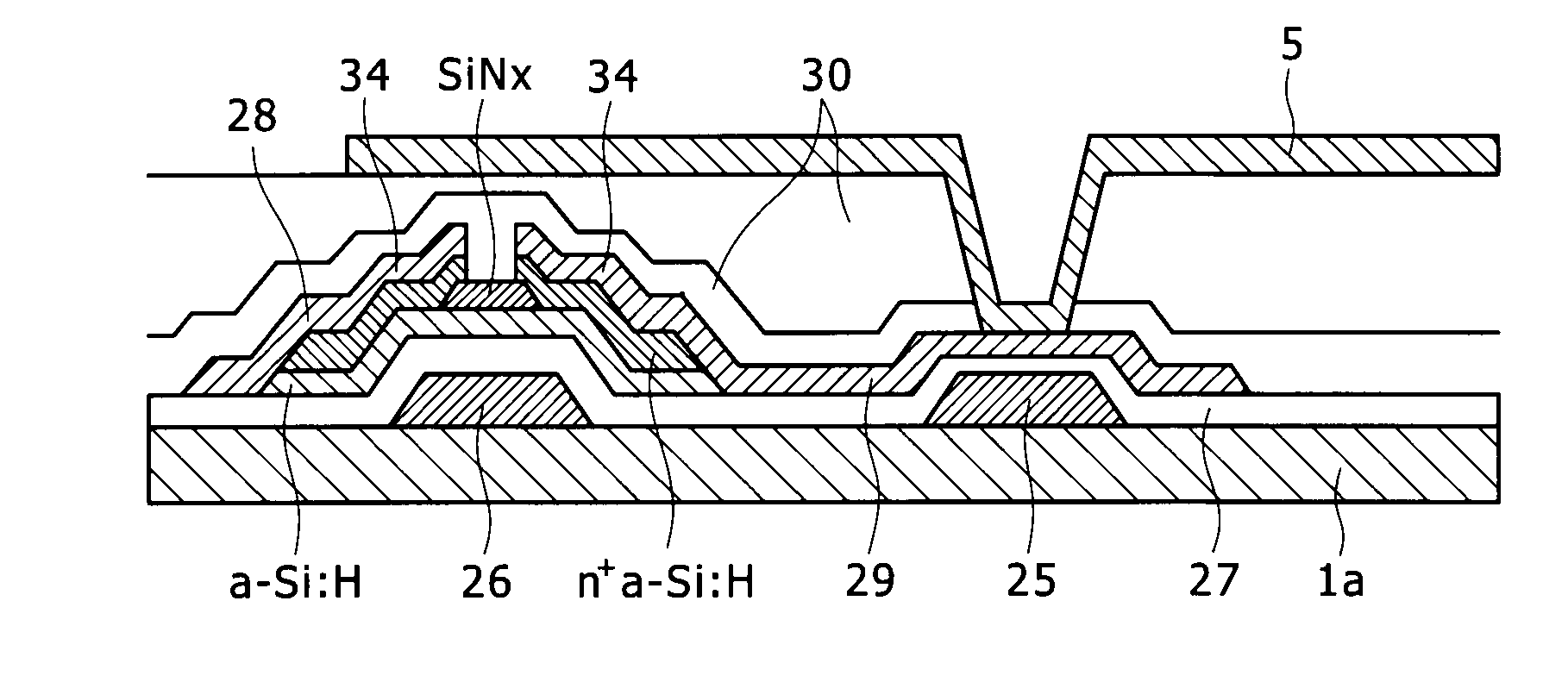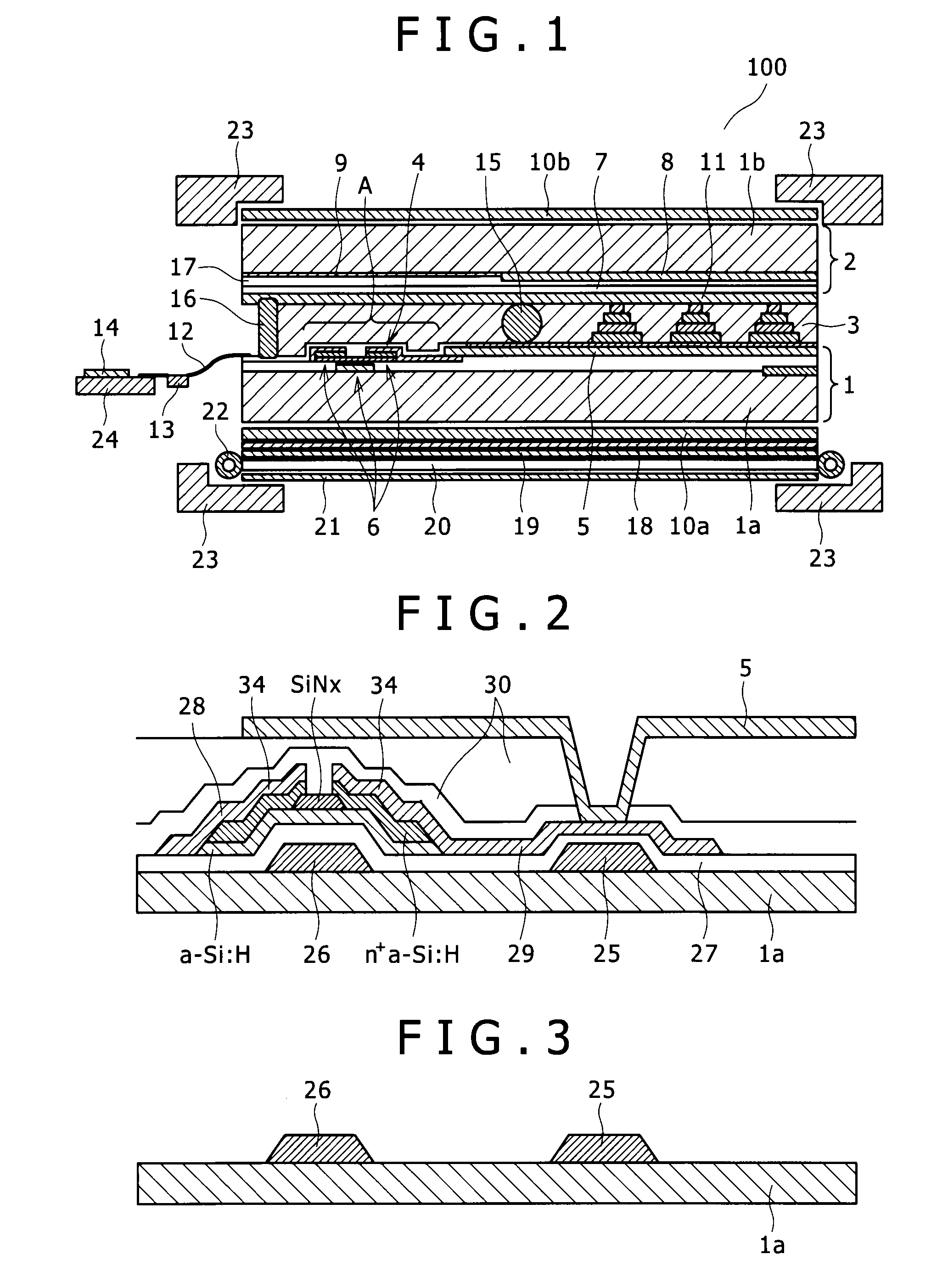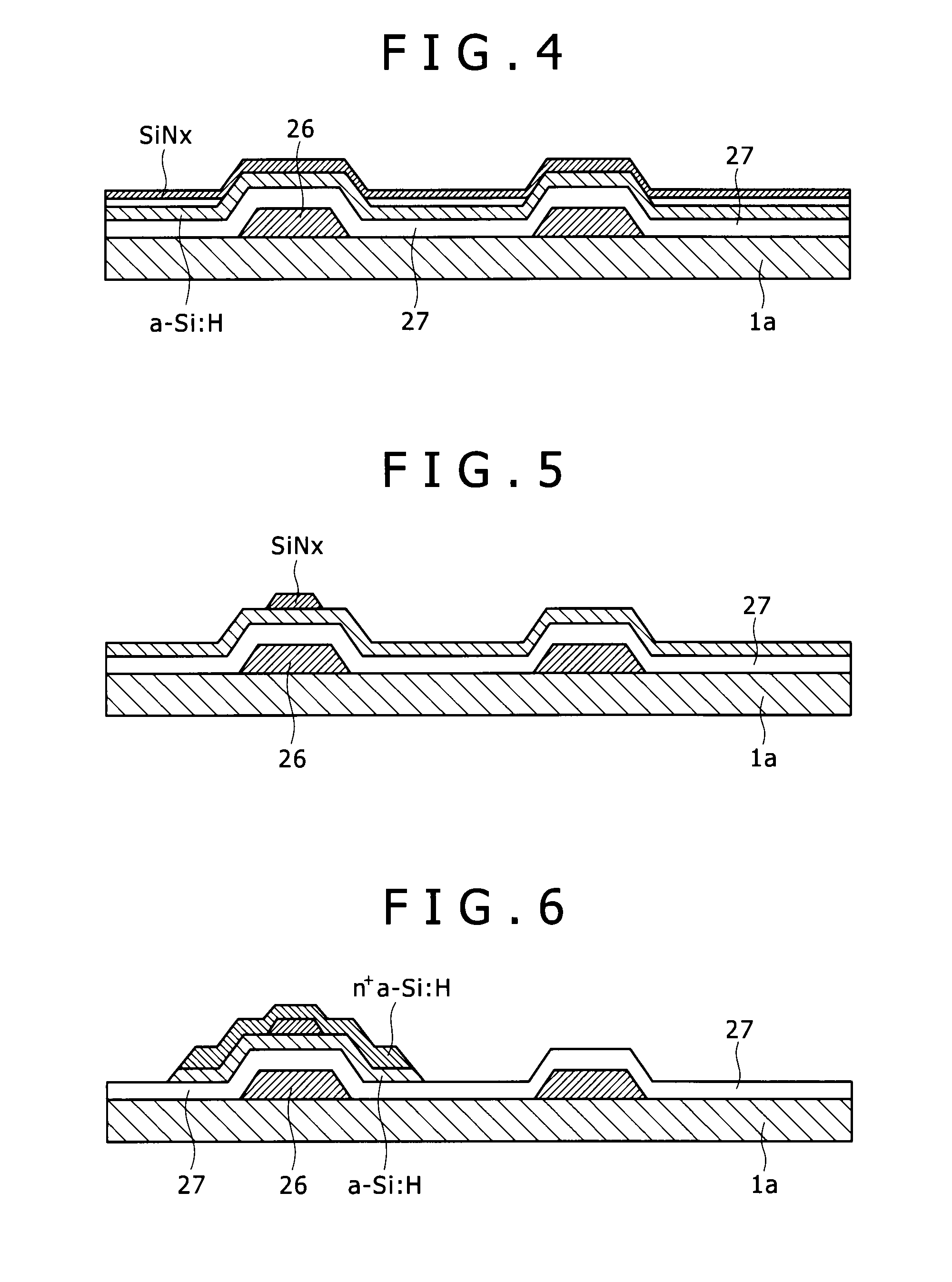Display device, copper alloy film for use therein, and copper alloy sputtering target
a technology of copper alloy film and display device, which is applied in the direction of semiconductor/solid-state device details, instruments, transportation and packaging, etc., can solve the problems of/or insulating film, poor adhesion to glass substrate, and suffer from peeling off from glass substrate, etc., to achieve low electric resistance, large screen size, and high frequency
- Summary
- Abstract
- Description
- Claims
- Application Information
AI Technical Summary
Benefits of technology
Problems solved by technology
Method used
Image
Examples
example 1
[0138]To evaluate adhesion between a Cu alloy film and a glass substrate, peel tests using an adhesive tape were performed in the following method.
[0139](Preparation of Specimens)
[0140]Initially, a pure Cu film, a pure Mo film, and a series of Cu alloy films having the compositions given in Table 1 were deposited to a thickness of 300 nm on a glass substrate (Eagle 2000 supplied by Corning Inc., having a diameter of 100 mm and a thickness of 0.7 mm) through DC magnetron sputtering under film deposition conditions as mentioned below at room temperature. After deposition, the films were subjected to a heat treatment of holding at 350° C. in a vacuum atmosphere for 30 minutes and thereby yielded adhesion evaluation specimens.
[0141]The pure Cu film and the pure Mo film were deposited using a pure Cu sputtering target and a pure Mo sputtering target, respectively. The Cu alloy films having different compositions were deposited each using, as a sputtering target, a pure Cu sputtering targ...
example 2
[0154]A series of Cu—X-containing alloy films was deposited, and how the adhesion to a glass substrate (the film adhesion rate) varies depending on a heat treatment performed after film deposition was determined.
[0155](Preparation of Specimens)
[0156]A series of Cu—X-containing alloy films (X is Al, Mg or Ti, the X content is 0.1 atomic percent, 2.0 atomic percent or 5.0 atomic percent) was deposited to a thickness of 300 nm on a glass substrate (Eagle 2000 supplied by Corning Inc., having a diameter of 100 mm and a thickness of 0.7 mm) through DC magnetron sputtering by the procedure of Example 1. Next, the following specimens were prepared:
(A) specimens as prepared in the above method (specimens in an as-deposited state),
(B) specimens after subjected to a heat treatment of holding at 350° C. in a vacuum atmosphere for 30 minutes,
(C) specimens after subjected to a heat treatment of holding at 400° C. in a vacuum atmosphere for 30 minutes, and
(D) specimens after subjected to a heat t...
example 3
[0160]A series of Cu—X-containing alloy films was deposited, and the electric resistivities of the alloy films were measured and evaluated.
[0161](Preparation of Specimens)
[0162]A series of Cu—X-containing alloy films (X is Al, Mg or Ti, the X content is 0.1 atomic percent, 2.0 atomic percent or 5.0 atomic percent) was deposited to a thickness of 300 nm on a glass substrate (Eagle 2000 supplied by Corning Inc., having a diameter of 100 mm and a thickness of 0.7 mm) through DC magnetron sputtering by the procedure of Example 1.
[0163](Measurement of Electric Resistivity)
[0164]The above-prepared Cu—X-containing alloy films were processed into stripe patterns (electric resistivity testing patterns) having a width of 100 μm and a length of 10 mm through photolithography and wet etching, and the electric resistivities of the patterns were measured at room temperature by a direct-current four-point probe method using a prober.
[0165]The measurements of the electric resistivities were respect...
PUM
| Property | Measurement | Unit |
|---|---|---|
| thickness | aaaaa | aaaaa |
| thickness | aaaaa | aaaaa |
| size | aaaaa | aaaaa |
Abstract
Description
Claims
Application Information
 Login to View More
Login to View More - R&D
- Intellectual Property
- Life Sciences
- Materials
- Tech Scout
- Unparalleled Data Quality
- Higher Quality Content
- 60% Fewer Hallucinations
Browse by: Latest US Patents, China's latest patents, Technical Efficacy Thesaurus, Application Domain, Technology Topic, Popular Technical Reports.
© 2025 PatSnap. All rights reserved.Legal|Privacy policy|Modern Slavery Act Transparency Statement|Sitemap|About US| Contact US: help@patsnap.com



